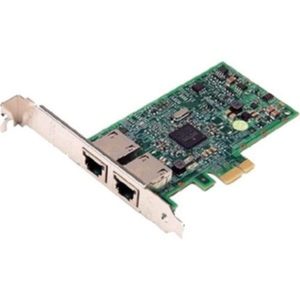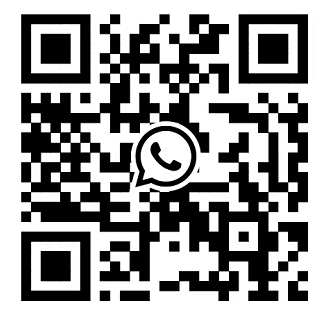Related Knowledge About Network Cards
A network card is a piece of computer hardware designed to allow computers to communicate over a computer network. Since it has a MAC address, it falls between Layer 1 and Layer 2 of the OSI model. It allows users to connect to each other via cable or wirelessly.
Each network card has a unique 48-bit serial number called a MAC address, which is written in a ROM on the card. Every computer on the network must have a unique MAC address.
No two network cards produced have the same address. This is because the Institute of Electrical and Electronics Engineers (IEEE) is responsible for assigning unique MAC addresses to network interface controller (network card) vendors.

Introduction
The network card is equipped with a processor and memory (including RAM and ROM). Communication between the network card and the LAN is carried out through serial transmission through cables or twisted pairs. The communication between the network card and the computer is carried out in parallel transmission through the I/O bus on the computer motherboard. Therefore, an important function of the network card is to perform serial/parallel conversion. Since the data rate on the network is not the same as the data rate on the computer bus, a memory chip that caches the data must be installed in the network card.
Network cards used to be plugged into the computer bus as expansion cards, but because of their low price and the ubiquity of the Ethernet standard, most new computers have integrated network interfaces on the motherboard. These motherboards either have Ethernet functionality integrated into the motherboard chip, or use an inexpensive network card connected to the motherboard via PCI (or the newer PCI-Express bus). Unless multiple interfaces are required or other types of networks are used, a separate network card is no longer needed. Even newer motherboards may have built-in dual network (Ethernet) connectors.
When installing a network card, the device driver that manages the network card must be installed in the computer's operating system. This driver will later tell the network card where in the memory the data blocks transmitted from the LAN should be stored. The network card must also be able to implement the Ethernet protocol.
The network card is not an independent autonomous unit because the network card itself does not have a power supply but must use the power of the computer into which it is plugged in and is controlled by that computer. The network card can therefore be viewed as a semi-autonomous unit. When the network card receives an erroneous frame, it discards the frame. When the network card receives a correct frame, it uses an interrupt to notify the computer and deliver it to the network layer in the protocol stack. When the computer wants to send an IP data packet, it is handed down from the protocol stack to the network card, assembled into a frame, and sent to the LAN.
As the level of integration continues to increase, the number of chips on the network card continues to decrease. Although there are many types of network cards produced by various manufacturers, their functions are similar.
The main function
1. Data encapsulation and decapsulation
When sending, the data passed from the upper layer is added with a header and a tail to become an Ethernet frame. When receiving, strip off the header and trailer of the Ethernet frame, and then send it to the upper layer
2. Link management
Mainly implemented through the CSMA/CD (Carrier Sense Multiple Access with Collision Detection, Carrier Sense Multiple Access with Collision Detection) protocol
3. Data encoding and decoding
That is Manchester encoding and decoding. Among them, Manchester code, also known as digital bidirectional code and phase encoding (PE), is one of the commonly used binary code line encoding methods. It is used by the physical layer to encode the clock and data of a synchronous bit stream. In communications technology, a code used to represent the combination of data and timing signals in the bit stream to be sent. Commonly used in Ethernet communications, train bus control, industrial buses and other fields.
Classification
Depending on the physical layer standards and host interfaces supported by the network card, network cards can be divided into different types, such as Ethernet cards and Token Ring network cards. Network cards are divided into different types according to the connection method between the network card and the bus on the motherboard, the transmission rate of the network card, and the interface connecting the network card to the transmission medium.
According to the computer types supported by network cards, they are mainly divided into standard Ethernet cards and PCMCIA network cards:
Standard Ethernet cards are used for desktop computer networking, while PCMCIA cards are used for laptop computers.
According to the transmission rate supported by the network card, it is mainly divided into four categories: 10Mbps network card, 100Mbps network card, 10/100Mbps adaptive network card and 1000Mbps network card:
According to the transmission rate requirements, 10Mbps and 100Mbps network cards only support the transmission rates of 10Mbps and 100Mbps. When using unshielded twisted pair UTP as the transmission medium, the 10Mbps network card is usually used with Category 3 UTP, while the 100Mbps network card is used with Category 5 UTP. connect. The 10/100Mbps adaptive network card automatically detects the transmission rate of the network and ensures the compatibility of two different transmission rates in the network. With the continuous improvement of LAN transmission rate, 1000Mbps network cards are mostly used in high-speed servers.
According to the bus type supported by the network card, it can be mainly divided into ISA, EISA, PCI, etc,.
Due to the rapid development of computer technology, the use of ISA bus interface network cards is becoming less and less. The network card of the EISA bus interface can transmit 32-bit data in parallel, and the data transmission speed is fast, but the price is relatively expensive. The PCI bus interface network card has a low CPU occupancy rate. The theoretical transmission rate of the commonly used 32-bit PCI network card is 133Mbps, so the supported data transmission rate can reach 100Mbps.



